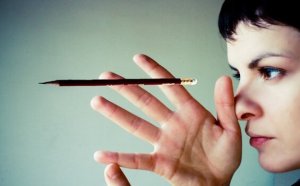The Creative Brain: Free, Emotional, and Connected Minds


Written and verified by the psychologist Valeria Sabater
The creative brain is incredible. It’s playful, full of emotions, free, and tireless. It doesn’t believe in limits. The creative brain chooses to be connected with everything so it can learn from every stimulus. Oftentimes, it doesn’t even know how it came up with certain ideas, because ideas pop up like flashes.
Steve Jobs used to say that creativity was all about connecting the right elements. It’s connecting our past experiences with our reality and daring to create new and challenging things. Not everybody will understand those things at first but, later on, they’ll open up to new possibilities. It’s that innovation that every company needs, that human capital that our society should appreciate.
“Creative individuals […] show tendencies of thought and action that in most people are segregated. They contain contradictory extremes; instead of being an ‘individual’, each of them is a ‘multitude’.”
-Mihaly Csikszentmihalyi-
As curious as it may sound, to this day we still have some wrong ideas about creativity and the creative brain. For instance, we think that the ability of creating innovative and original ideas is related to intelligence. What’s more, there are some people who still believe that the right hemisphere is the focus and origin of our creativity. Those things aren’t true. Myths continue to get in the way of the scientific progress we’ve made over time.
First, we must understand that creativity is an ability all of us are born with. We must also understand that, in order to use it and empower it, we need to look at the world and ourselves from a different perspective. We’ll discuss this below.
How does the creative brain work?
The creative brain works very distinctly. A recent study published in the National Academy of Sciences revealed to us what some neuropsychologists already suspected: creative people have higher connected neuronal structures than other people. Through magnetic resonance imaging, scientists saw the fascinating complexity of functional and neuronal connections in creative people.
Therefore, we disprove the hypothesis that associates creativity to the right hemisphere of the brain exclusively. A person who generates innovative, daring, and original ideas has a symphony of immense interactions in both left and right hemispheres. Similarly, scientists have made other interesting discoveries regarding the creative brain.
A flexible mind that’s tolerant to uncertainty
As we’ve already seen, the neuronal structure of a creative person is denser and more connected. This also explains their flexible mental focus, always open to ambiguity and uncertainty. While more rigid minds are incapable of accepting contradictory facts, creative minds see them as a challenge and try to find explanations with a hands-on approach.
Higher intelligence doesn’t mean creativity
Creative people don’t always have noteworthy levels of intelligence. We saw this in the famous study conducted by Frank X Barron in 1956. He gathered some of the most renowned architects, scientists, and writers such as Truman Capote, William Charles Williams, and Frank O’Connor. He wanted to understand how some of the most creative minds worked.

This is what he discovered that day in the company of such great and varied personalities:
- They were open to exploring a more profound interior life. They were reflective, knew how to analyze their emotions, and were aware of their interior needs.
- These people had the motivation and desire to learn, discover new things, or show the world new ideas, concepts, or stories.
- There was also an emotional and moral component. Most of them had noble values.
- They accepted a lack of order. This even inspired them.
- They had a very peculiar madness in them. At times, they seemed child-like, playful, and anxious to go beyond the established. These people were ready to be amazed and enjoy the most basic things.
- They liked to take risks.
The creative brain and introspection
Another trait of creative people is their ability for introspection. They have a deeper self-awareness and know how to combine their weakest areas with their strongest. This point of being able to recognize one’s own limitations, flaws, or worst qualities is often synonymous with good mental health.
Creativity has no order at the neurological level
In 2001, neurologist Marcus Raichle conducted an interesting study on creativity which resulted in interesting findings. The creative brain is incredibly disordered. We’ve already seen that creative innovation is not located solely on the right hemisphere. In reality, it’s incredibly dispersed.
- Thus, Dr. Raichle spoke of the “imagination network” which involves many regions of the brain.
- On the other hand, another process that characterizes the creative brain is what’s known as “self-generated cognition”. In other words, the ability to daydream, contemplate, or let the mind wander.

After more than 30 years of studying creative people, Mihaly Csikszentmihalyi indicated that they’re complex people. It’s as if more than one person lived in one brain. It’s as if there was an entire team of professionals inside them, demanding things and coming up with new ideas and interests.
Those voices are what motivates them. However, sometimes they can also come up with too many ideas and projects… In fact, this is one of the most common problems for the creative brain: learning how to control all that flow of ideas, emotions, and thoughts.
This text is provided for informational purposes only and does not replace consultation with a professional. If in doubt, consult your specialist.








